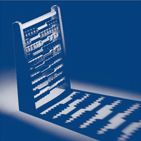Tax Efficient Profit Extraction
Happy New Tax Year!
The new tax year has seen the introduction of a number of different tax rates and allowances – specifically changes to dividend tax and interest. As a result calculating the most tax efficient means of extracting profit from owner managed limited companies has become more complex than ever. Using a combination of reliefs however, in the right circumstances, it is possible for a director-shareholder to utilise their personal allowance and basic rate band and draw £43,000 of income while paying only £1,575 of tax.
Interest Income
From 6 April 2016 UK taxpayers are entitled to both a ‘Personal Savings Allowance’ (“PSA”) and a ‘Savings Rate Band’. Despite the different names, both of these apply a 0% tax rate to interest income within certain limits.
The PSA is £1,000 for basic rate (20%) taxpayers, £500 for higher rate (40%) taxpayers and Nil for additional rate (45%) taxpayers. This broadly means £1,000 or £500 of interest income is tax free for a basic or higher rate tax payer respectively.
The savings band is an additional allowance of up to £5,000 to set against interest income although its availability depends on the make up of an individual’s taxable income. If non-savings income (salary, benefits, trading income, rental income etc.), after deducting the personal allowance and excluding dividend income, falls below £5,000 then the savings band will apply. The amount of savings band available to utilise is the excess of up to £5,000 over the personal allowance where it is not used up by non-savings income.
Both of these reliefs enable interest to be drawn from a company income tax free. In order for a company to pay interest to an individual however the individual must have lent the company money or have undrawn dividends or salary in a loan account for example.
Any interest must of course be charged at a commercial rate in order to be deductible for corporation tax and there is a certain amount of additional administration required by the company in accounting for this.
Dividend Allowance
As previously reported in Muras Matters, the taxation of dividends has changed radically. The dividend tax credit has been abolished and the first £5,000 of dividends is taxed at 0%, with the balance at 7.5%, 32.5% or 38.1% depending on which tax band the dividend income falls in.
Salary
When considering the various components of income, for 2016/17 a salary of £8,060 is the maximum level which ensures an individual receives a credit towards the state pension for the tax year without actually incurring a National Insurance charge.
As indicated above using a combination of these reliefs and allowances it is possible to draw £43,000 of income at a tax cost of only £1,575, being an effective tax rate of 3.66% (although further tax will be payable if this income is exceeded). There is also the added benefit of saving corporation tax on interest and salary at 20% within the company.
It is important to understand that every situation is different, and the rules are extremely complex, so it is important to seek advice when considering tax efficient profit extraction. If you would like to discuss this in more detail please contact our Tax Director, Jenny Marks.
To see our other news items please visit our Muras Baker Jones – Blog.



